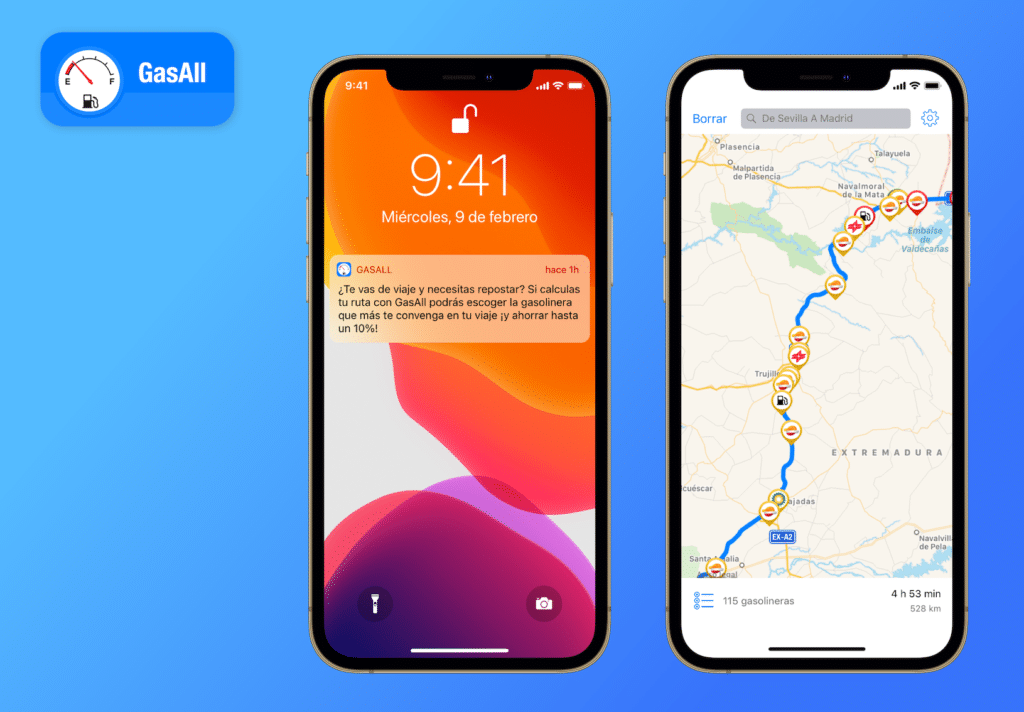Already reaching the equator of the year, we are reviewing the Mobile Marketing growth in 2021 and the changes that Covid brought regarding the expected estimates before the pandemic. We also reveal how we manage to improve user retention in a real app developed by Mobivery team. Please, keep reading to find out.
1. Mobile Marketing in 2021
Growth opportunities within mobile marketing continue to rise, industry professionals must draw up a multichannel marketing strategy within mobile that interacts at different points in the customer journey to increase effectiveness.
However, in this year when the sector has skyrocketed we are also facing new challenges, such as the saturation of advertising perceived by consumers and which leads to half of them using ad blockers on their mobiles or the attention to privacy for which companies like Apple bet and putting obstacles to personalized advertising.
2. Mobile marketing campaigns
The effectiveness of advertising on smartphones is that mobiles are personal. For years, radio, television or mail campaigns had to serve millions of people, yet that single message no longer appeals to all consumers. Now, marketers benefit from the implementation of targeted campaigns.
Some notable advantages are that mobile marketing is very easy to track, as users click on the links or not and this CTR provides very valuable data, response rates for mobile campaigns that exceed those of conventional web ads or push notifications as the most powerful weapon for user loyalty. Although all these advantages should not leave aside a multi-channel strategy that allows updating user information on all their devices.
3. Sale of advertising space on mobile devices
Although mobile advertising fell in March, it recovered faster than web advertising. Spending on mobile devices soared in the second quarter of 2020 by 71 % YoY – according to PubMatic – when a change of just 5 % was expected. The leap from advertisers to mobile advertising reflects intensive use of these devices during the pandemic and offers the perfect setting for programmatic buying, thus increasing investment in mobile headlines and private marketplaces.
Another interesting piece of information – offered by App Annie – is that we are using more apps on average than in previous years. It is nothing more than the consequence of consumers having started using mobile phones as a result of Covid for new utilities (delivery, banking, video calls, etc.). This puts advertisers in a new position with a more diversified investment that on the other hand offers new opportunities.
4. Mobile e-commerce
Although electronic commerce through mobile phones was already on an upward trend, this situation has improved even more if the forecasts are possible. Spaniards are the Europeans who have increased their online purchases the most during the pandemic, according to Oney data. Among them are those over 60, some of whom have made their first online purchase last year.
With an increasingly intensive use of mobile devices, their direct influence on online purchases will be greater and greater, intervening either in searches, coupons, transactions, etc.
The main advantage of m-commerce is the immediacy, let’s think that the average response time of a message on the mobile is 90 seconds. In the mobile shopping experience, less is always more, reducing clicks, fields, and records translates into more purchases. That is why the arrival of payments optimized for mobiles (PayPal, Bizum, Bitpay, Apple Pay or Android Pay) is a new advantage since they accelerate the payment process by revolutionizing the way in which users interact with their device. An example of this advantage is represented by Starbucks with its “Mobile Order & Pay”, which has even surpassed Apple Pay in number of users, and which reveals the importance of the native integration of mobile payment in its strategy. At the end of 2020, a quarter of Starbucks orders were made from a mobile.
5. New tools in social ecommerce
What are the trends? What are we going to find in social ecommerce? Mobile is the perfect platform for live streaming. Any company can create videos on a low budget for product demonstrations, create roundtables to discuss topics related to their industry, etc. It is an experience that we will see more and more because it allows the audience to feel part of the brand and that they can continue in the comments once the broadcast ends.
To take advantage of the private messaging advantage that social commerce brings, companies will increasingly use chatbots to improve sales. The latest advances in AI allow you to make recommendations to customers or show images of products without them having to wait to be served.
BONUS: How to take advantage of Mobile Marketing?
Example of success: retention campaign in Gasall app

The proliferation of apps, both new startups and traditional companies, has brought a harsh reality: for every 100 users who download your app, less than 4 reopen it after the first 30 days. And this number is getting smaller and smaller.
At Gasall we implemented an LCM (LifeCycle Management) notification plan and managed to increase our 7-day retention by 14 %, and our 30-day retention by 22 %. Although they may not seem like big numbers, retention works the same as compound interest: each user you retain adds to the user base, so even if the retention remains constant, the total number of users increases exponentially with each increase.
The top 3 lessons we’ve learned during the process:
- Quality vs. Quantity – It is not about flooding customers with messages but about giving them information that is useful to get the most out of the product, or that has a meaning at all times.
- Steer everything towards the ‘killer feature’ – Facebook found that when a user added at least 7 friends, retention increased substantially. At Gasall we found that when a user added the size of the deposit and saw the savings in €, they returned to the app more often.
- Test, measure, test, measure and… re-test – There is no magic formula or secret to making notifications work. The only way is to test and measure until you find the message and the frequency that helps your users the most.
Have you also managed to improve your app thanks to Mobile Marketing practices? Our team can help you achieving your goals.





